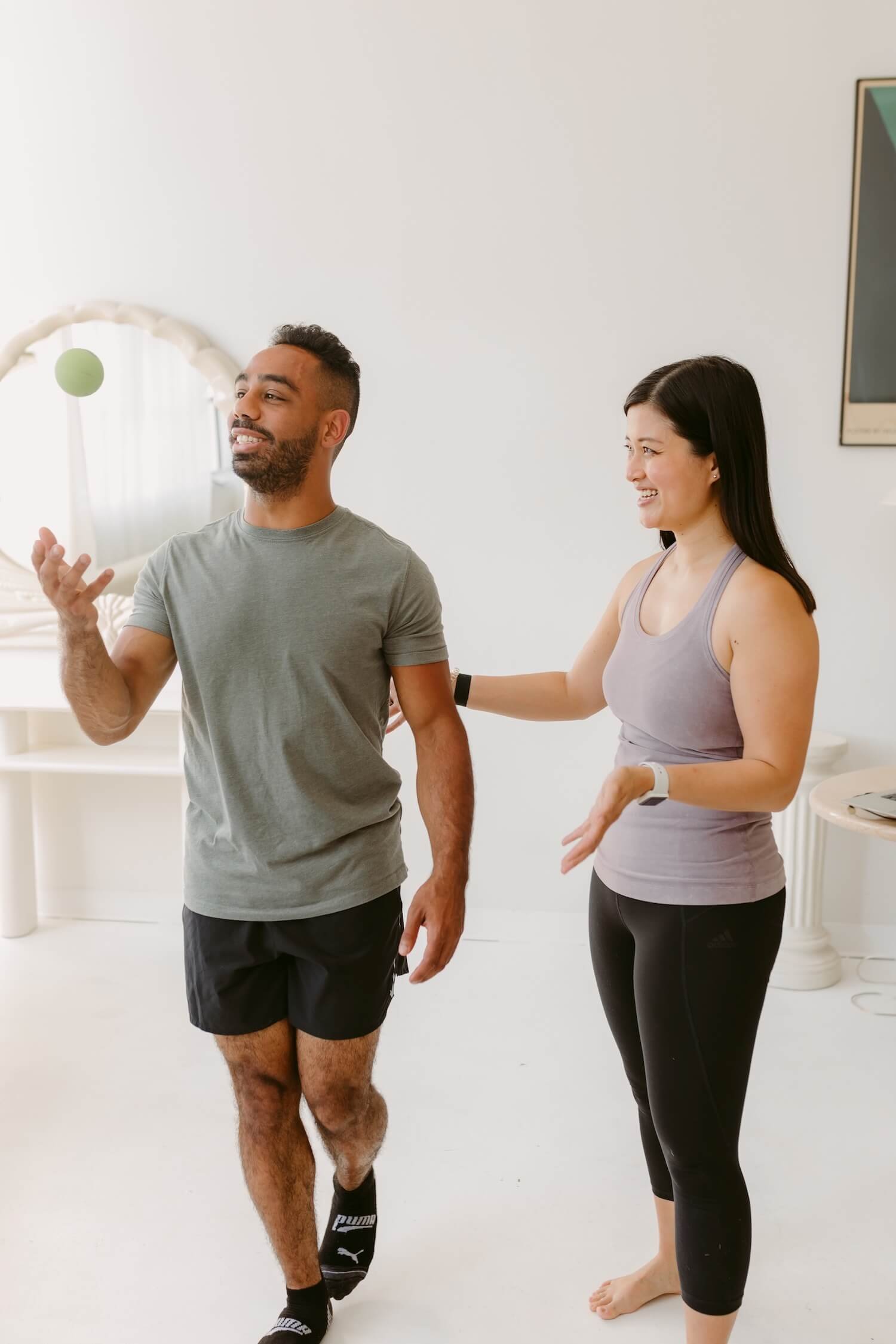How is Vision Integrated into Concussion Treatment?
Vision is our dominant sense when we navigate our complex and continuously dynamic environments. We have to constantly process visual information in a variety of environments to coordinate our movements for our intended actions. Although our vision helps guide our movements, our movements also guide what we perceive. Therefore, being able to perceive accurately and efficiently is important in directing and refining our movement, including qualities such as precision, speed, agility, and power. Furthermore, since our vision is intimately connected with the other sensory systems, it is also closely involved in visually-guided movements, gaze stabilization, selective attention, and postural control.
Concussions can affect our ability to process sensory information, especially in more complex environments, and this can result in symptoms associated with sensory overload, such as light sensitivity or visual vertigo. There are multiple areas of the brain involved with processing, integrating, and executing movement based on visual information. Furthermore, the ‘real world’ is dynamic, unpredictable, and constantly evolving. After a concussion, this circuitry can become inefficient and bring out symptoms and functional impairments associated with poor visual-motor integration.
Areas that can be impacted by the poor integration of visual function include:
Visual Perception and Attention
Visual perception and attention issues can result in decreased response times and poor accuracy, especially if responding to a variety of complex stimuli. Depth perception issues are related to poor localization of objects in space and decreased peripheral awareness. That is why it is common to have ‘tunnel vision’ after a concussion, where there is increased emphasis on what is in front of you and loss of side vision (i.e. difficulty navigating stairs, tendency to bump into objects).
Vestibulo-Ocular Reflex
The vestibulo-ocular reflex is dependent on a stable binocular system (how well both eyes work together) and proper coordination of head and eye movements. Its primary role is to keep the eyes still during head motion. However, when it is impacted, the visual world becomes blurred and can sometimes be described as ‘bouncing’.
Cognition (Executive Function, Reaction Time, and Working Memory)
With poor integration of visual information, our brain will have a more difficult time processing and responding to information efficiently. Furthermore, as our vision is integrated into most of our daily activities, issues with cognitive functioning can have a significant impact on our daily activities. With more mental resources being used to process and integrate visual information, mental fatigue and headaches can become a problem.
Balance and postural control
Visual information guides our motor behaviour and postural control through its connections with the vestibular and proprioceptive systems. There needs to be sensory coherence among the systems to provide the proper foundation for anticipating a motor response based on the visual information received. Since they respond to each other’s feedback, disturbance in one will affect the other and can reinforce abnormal movement patterns.
How can we train the brain to improve its ability to process visual information?
Incorporating rehabilitation strategies that enhance the integration of visual processing and motor action:
External Focus of Attention
Use external targets and cues to guide movement, such as visual targets. An internal focus of attention involves engaging internal sensory feedback, such as from our proprioceptive system, to produce conscious movement; whereas, using an external focus of attention encourages more automatic processing by using external sensory feedback from our vision. When it comes to rehabilitation exercises, it means using visual targets to guide movement compared to using verbal cues, such as “lean forward to reach for that target”.
Progressive Motor Demands
Progress the exercises from simple to complex movements, by altering a wide range of parameters, including direction, duration, distance, number of stimuli, and repetitions. Incorporate elements of precision, rhythm, and speed to refine the movements in order to adapt to a variety of situations and environments.
Cognitive Loading
Incorporate a task that will provide an increased level of challenge when processing visual information, such as a cognitive (i.e. counting backwards), sensory (i.e. playing music in the background), or activity-specific (i.e. incorporating a sport-specific skill) task. By dual-tasking, your brain has to compete for attentional resources available for creating movement.
Since over 50% of our brain is dedicated to vision and visual processing, and almost 80% of all sensory processing is involved with information coming from the eyes, integrating vision into concussion treatment is key to returning to our wide range of daily activities!



